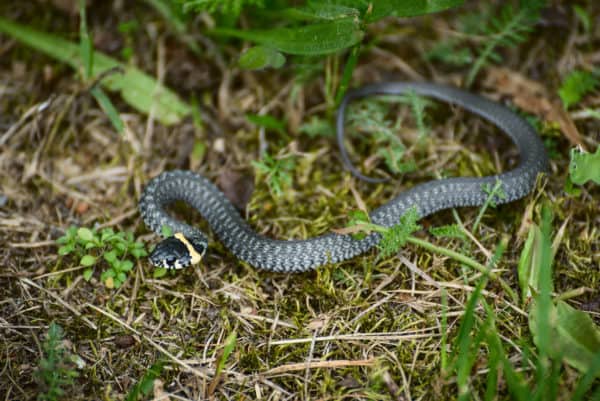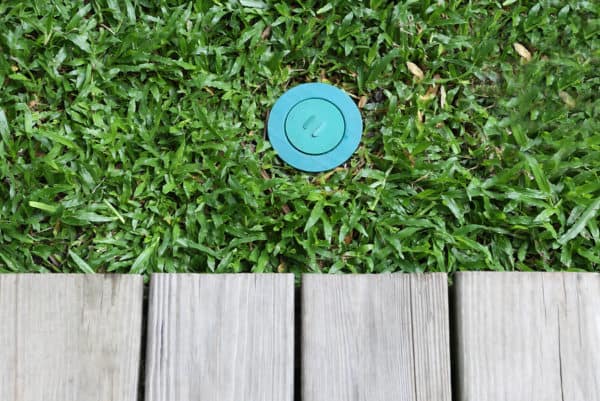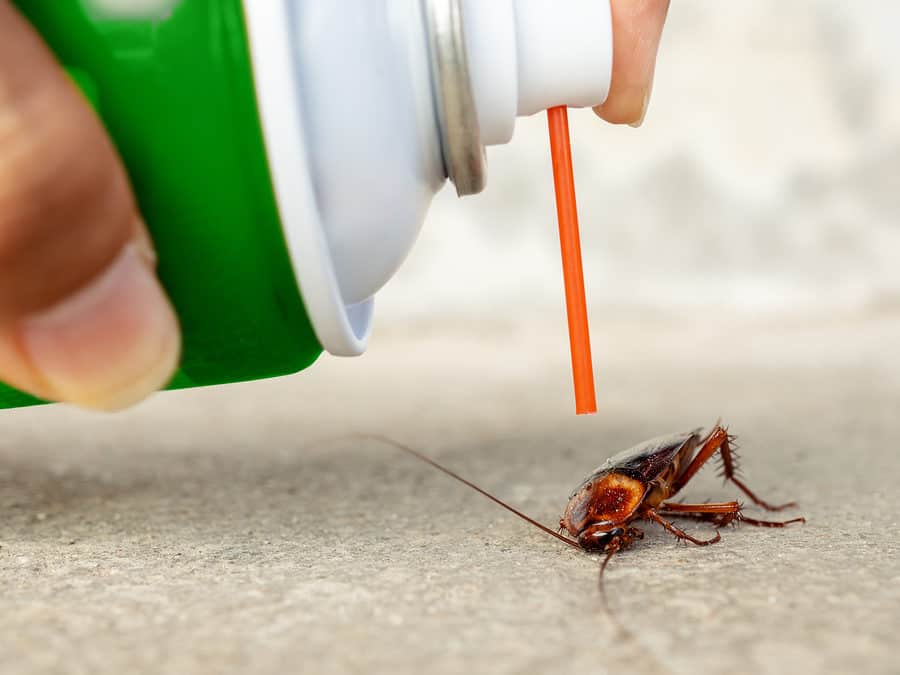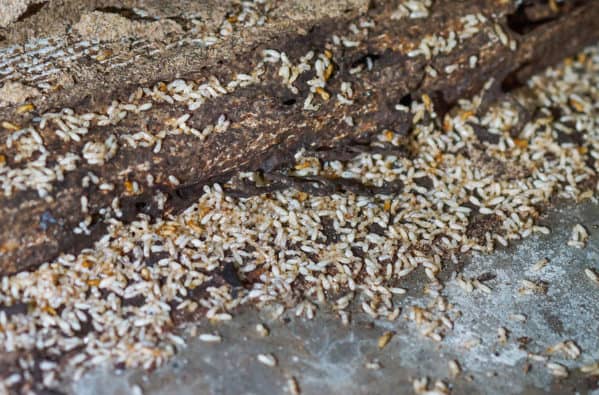READY TO GET STARTED?
REQUEST A FREE ESTIMATE
Fill out the form below or call (888) 466-7849 for a free, no-obligation estimate.

Snakes – scaly, legless creatures that slither into your yard and sometimes even your home. While your first instinct may be to run the other way, there are several benefits to keeping them around. Snakes keep rodent populations under control, with a single snake able to eat 3 to 4 mice at one time. They also eat moles, voles, insects, and even fish.
Snakes are more commonly encountered when temperatures average between 80 and 90 degrees Fahrenheit, usually during the spring and throughout the summer. They are most active in the early morning and late afternoon, as summer temperatures are often too hot for them to be out in during the hottest times of the day. Snake activity will pick back up again in late summer and early fall before they go into hibernation or brumation. Brumation is more common in southern states where the climate is warmer, and snow is less likely. Snakes don’t actually sleep in brumation, but rather their bodies adjust to the lower temperatures, slowing down their metabolism and making them less active. On warm winter days, brumating snakes will sometimes come out to bask in the sunshine, often surprising unsuspecting people with their presence.
While calling a professional pest control company is a guaranteed and safe way to tackle a snake problem, there are also some home remedies you can try to repel snakes. Home remedies to keep snakes away offer several benefits, including:
Snakes are often found in areas where rodents are present, as this is one of their primary food sources. Snakes are also known to eat frogs, birds, moles, voles, insects, and even fish. If you have a problem with any of these animals, consider getting rid of that pest issue first. Once the source of food has been eliminated, snakes will move on in search of another source of food.
Snakes prefer dark, damp places and are known to live and hide in cracks, crevices, and holes. Eliminating these hiding places can help deter snakes from taking up residence on your property. Carefully inspect the exterior of your home and your property and repair any cracks or holes you find. Repair any damaged gutters, piping, and ventilation ducts. Repair or replace any damaged screens on windows and doors. Snakes will also hide in wood piles and compost heaps. If possible, store firewood in sealed, lockable wood boxes. Try to get rid of any piles of wood chip mulch, straw mulch, leaves, etc., that may be collecting on your property.
If your yard or garden is prone to snakes, consider making changes that will deter these pests from coming in. Garden regularly to remove any snake attractants like debris, holes, and overgrowth. Keep the grass cut short of eliminating hiding places for snakes. Consider installing snake-proof fencing made of steel mesh, plastic sheeting, or a catch net. If you do install fencing, make sure it is flush with the ground and angled outward and that it is at least 3 feet high and 4 feet deep. You can also use materials that make it difficult for snakes to slither over, like holly leaves, pine cones, egg shells, and gravel. You can also consider planting snake-repellent plants that provide a natural deterrent. Some common examples include marigolds, lemongrass, and wormwood.
Foxes and raccoons are common predators of snakes. Guinea hens, turkeys, pigs, and cats will also help keep snakes away. If foxes are indigenous to your area, fox urine is a very good natural repellent for snakes when spread around your property.
Snakes have an elevated sense of smell and are ultra-sensitive to odours and fumes. One smell they particularly dislike is smoke. One remedy is to dig a fire pit and let it smoke for several days – covering the embers with moss and leaves can give you the best effect.
Naphthalene is a common ingredient found in many commercial snake-repellent products. It is one of the most common snake repellents. If you don’t want to spend money on a commercial product, naphthalene is also the main ingredient found in mothballs. The smell of naphthalene irritates snakes without harming them. Place mothballs in holes, cracks, crevices, or any other areas around your property where snakes may be a problem. One caveat to using moth balls is they can be toxic and fatal to children or pets if they are ingested, so use caution or avoid using them if you have pets or children in your home.
Powdered sulfur is a great option to repel snakes. Place powdered sulfur around your home and property, and once snakes slither across it; it irritates their skin so they won’t return. Sulfur does give off a strong odour, so consider wearing a mask that covers your nose and mouth when applying it.
Clove and cinnamon oil are effective snake repellents. These should be mixed together in a spray bottle and sprayed directly on snakes for maximum effect. Use caution, as snakes will often run in the opposite direction of the spray. This mixture can also be used in a diffuser indoors as a fumigant, as well.
The sulfonic acid in garlic and onions (the same chemical that makes us cry when we chop onions) repels snakes. Mix these with rock salt and sprinkle them around your home and yard for effectiveness. You can also infuse garlic into any essential oil and use it to fumigate rafters, basements, and other hard-to-reach places.
Snakes dislike the odour of ammonia, so one option is to spray it around any affected areas. Another option is to soak a rug in ammonia and place it in an unsealed bag near any areas inhabited by snakes to deter them away.
Vinegar is effective at repelling snakes near bodies of water, including swimming pools. Pour white vinegar around the perimeter of any body of water for a natural snake repellent.
Create a mixture of snake-repellent lime and hot pepper or peppermint and pour it around the perimeter of your home or property. Snakes don’t like the smell of the mixture, and the fumes are also itchy on their skin.
If home remedies to keep snakes away aren’t working, consider calling a wildlife control company for snake removal, snake prevention recommendations, and possibly other exterminating services like rodent control that could be contributing to the issue.
A Step-By-Step Lawn Care Guide

Termites can be a homeowner’s worst nightmare. Termites do their damage from the inside out and they often aren’t detected until after significant destruction has already been done. The signs of termites are often difficult to find until colonies are well established. In fact, termites cause an estimated $5 billion in damages each year in the United States. Yet many people still question if termite protection is worth the cost.
Structural damage caused by termites is the most expensive with an average cost of $3,000 for repairs. This amount varies depending on the extent and location of the damage that is caused. In addition to the structural damage caused by termites, cosmetic damage can also require repairs, costing an estimated $2,000 to fix things like discolored sheetrock, buckled floors, and peeling paint. This amount also varies depending on the materials that were damaged and the materials used to repair or replace it.
Termites must be exterminated before any repairs are done. The cost of a termite treatment not only include the termiticides or baits used in the treatment, but also the labor, training, and service hours for the termite exterminator. The average cost of termite control is $4 to $7 per linear square foot of your home. This estimate also varies based on the type of termite warranty provided, the location of your home, and the type of treatment required.
Unfortunately, most homeowner’s insurance policies do not cover termite damage and sellers are usually responsible for covering termite damage during the sale of a home. This can vary so it is always a good idea to check your state regulations. This also usually includes a termite inspection prior to the sale of the home.
Knowing the potential costs of termite damage and repair is reason enough to invest in termite protection. What options do homeowners have when a homeowner’s policy doesn’t cover termite damage? A termite bond or termite warranty is your best bet. A termite bond is a warranty between a homeowner and a termite company that functions as a maintenance contract for termite prevention, damage, and repair. Termite warranties vary by company, but they generally include an agreement for annual (or more often) termite inspections during the lifetime of the warranty, an agreement to provide treatment if termites are discovered (often at no additional charge to the homeowner), and in some cases an agreement to repair damages. Not all homes, however, qualify for these repair bonds so always check with your termite control provider about this.
A termite warranty provides you with peace of mind against termite damage. The warranty guarantees that the pest control company will continuously inspect your home and make sure that new infestations are discovered before they can proliferate. Termite warranties are also beneficial when buying or selling a home as they are often required before a sale can occur. Lenders will often not approve mortgages for at-risk homes without a termite bond. Only certified pest control companies can issue termite warranties. Yearly costs typically run $300-$400 for the warranty coverage, which includes the annual termite inspection.
Click here to schedule a free termite inspection.
What is the Difference Between Traditional and Green Pest Control?

With the recent focus on going “green” and harmful impacts on the environment, many people are ramping up their efforts to establish eco-friendly practices in both the workplace and at home. Efforts to recycle, reduce energy usage, and limit carbon emissions are all common ways to make a positive impact on the environment. One area that isn’t often thought of in the “green” movement is pest control. Green pest control is an environmentally friendly alternative to traditional pest control that is commonly used in areas that house the young, the elderly, the immunocompromised, and pets. But what is the difference between the two?
Traditional pest control provides most of the same benefits as green pest control but utilizes synthetic chemicals to eliminate and control pest populations. These chemicals are used sparingly, however, with just enough used to target the specific pest issue.
Green pest control, on the other hand, eliminates common household pests with the lowest environmental impact possible. This is achieved with ingredients derived from flowers, plants, and natural elements rather than harsh chemicals. Green pest control has proven to be just as beneficial as traditional pest control methods. Green pest control uses preventative measures combined with purposeful application of natural products.
Green pest control also utilizes a 5 step Integrated Pest Management (IPM) process which is an “effective and environmentally sensitive approach to pest management that relies on a combination of common sense practices.” The 5 steps of an IPM program include Plan, Inspection, Pest Identification, Ongoing Perimeter Protection, and Continuous Communication.
NorPest Green is Northwest’s quarterly pest control program performed by only the highest-trained professionals, using high-quality, non-toxic products derived from botanicals. We customize a plan based on your needs, so you can be sure your home is healthy and your family and pets are protected. NorPest Green also comes with a service guarantee meaning we come back in between regular scheduled pest control visits, if needed, at no additional cost to you.
Pests are a nuisance and can be detrimental to both your home and your health. Regardless of whether you choose a traditional pest control service or a green pest control service, protecting your family is of the utmost importance. Contact a professional pest control company like Northwest for a free pest control estimate.
German Roaches vs American Roaches: What’s The Difference?

Now that the holidays and spring break are over, travel season is slowing down; but that doesn’t mean that bed bug season is too. Bed bugs are active year-round. Even though you may not be travelling, guests coming to your home can bring bed bugs in too. Bed bugs are nuisance pests that are extremely difficult to get rid of. They are notorious hitchhikers, most commonly catching a ride on bags, purses, luggage, and wheelchairs, but they can also be found on clothing. Anyone can bring bed bugs into your home – an unexpected house guest, your spouse returning from an out of town work trip, or even your child coming home for a visit from college. Once bed bugs have gotten into your home, professional bed bug control is your best option to get rid of them. However, there are things you can do to help keep guests from bringing these pests into your home.
What You Should Know Before Termite Swarming Season
What Attracts Cockroaches To A Clean House?
10 Ways To Care For Your Lawn In Extreme Heat

Termites cause billions of dollars in damage each year. Because they work from the inside out, infestations are often not found until significant damage has already been done. Spring marks the beginning of the termite swarming season and these destructive pests are found in most of the United States (except for Alaska). What do you need to know before swarming season starts to help control termites? Find out the answers to many of your termite questions below.
Termites swarm as the weather begins to warm, usually at the beginning of spring or summer and usually after a rain event. Termites swarm when they go in search of a location to establish a new colony. Colonies typically don’t produce a swarm until they have been established for at least 3 years.
If a swarm happens inside your home, most of them will not survive to establish a new colony but it does mean that your home is likely infested. If a swarm happens outside your home or if you notice just a few stragglers inside, your home is most likely not infested but a colony (or multiple colonies) are present nearby.
Swarming termites have one purpose – to reproduce and establish a new colony. In fact, they don’t have biting or chewing mouthparts to cause damage to your home. Several hundred swarmers are produced by each colony but only a small percentage of these actually survive to start the new colony.
Termites have straight antennae and wide bodies without pinched waists. They are usually black or dark brown in color. Swarming termites have wings that are the same length and clear in color. Termites are found in decaying stumps, trees, wood debris, lumber, and other wooden structures. They cause structural damage by eating wood and other cellulose-based products like paper.
Flying ants (also known as carpenter ants) have elbowed antennae and pinched waists. They can be black, brown or reddish in color. They have 2 pairs of wings that differ in size and are tinted brown in color. Carpenter ants also inhabit wood and wood structures; however, they don’t eat wood and therefore do not usually cause any structural damage. They do eat nectar, seeds, other insects, and food debris in and around your home.
Both termites and flying ants swarm as part of their mating process.
The main attractant to termites is food. Termites love to eat anything wood or cellulose-based including lumber, firewood, newspaper, and more. They also like warm, dark places that are undisturbed such as your crawlspace. They also thrive in moist soil, especially around your foundations.
While there are some do-it-yourself options you can do around your home, these are more suitable for termite prevention rather than termite control. Getting rid of termites is a job best left to the professionals. Some things you can do around your home to help prevent termites include:
There are two major types of termite treatment: liquids and baits.
Liquid termite treatments have been around for years. Their purpose is to provide a long-lasting barrier in the soil that keeps termites from entering and infesting buildings. This treatment also helps eliminate termites that are already inside structures as it prevents them from getting back to the soil for supplemental moisture.
Bait termite treatments use a cellulose-based food product combined with a slow acting pesticide. The bait stations are installed below the ground where termites eat the bait and share it with other termites in their colony. This leads to a gradual decline in the termite population infesting the structure.
If you suspect you have a termite problem, contact a professional termite control specialist. A thorough termite inspection by a trained pest control professional is critical in identifying and eliminating a termite infestation from your home.
Lawn Care: How to Keep Your Grass Green in the Summer
5 Ways To Prevent Bed Bugs When Traveling